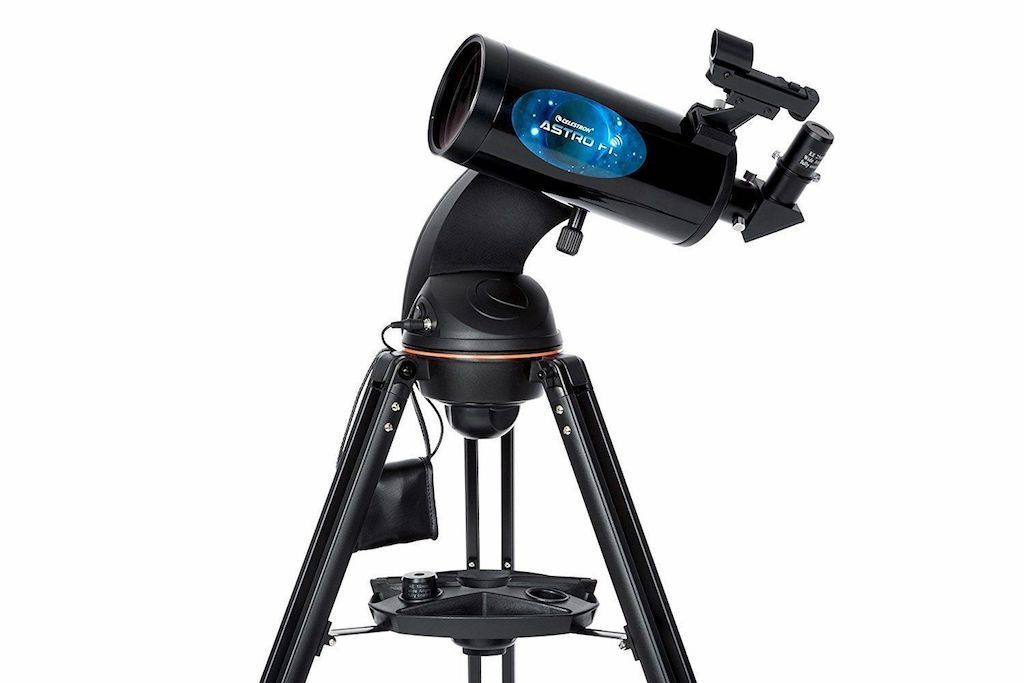
The moon and Mars will have a spring get-together on Tuesday (April 25) when the two celestial objects make a close approach in the sky. At almost the same time, the two celestial objects will share the same right ascension in the sky, an arrangement called a "conjunction."
During the conjunction, the moon will be six days into its new cycle which began with the April new moon on Wednesday, April 19. This means as it passes within around 3 degrees of Mars, it will appear as a thin arc of light during a phase called the waxing crescent moon. (The prefix "waxing" indicates that light is spreading across the lunar face.)
According to In the Sky, the conjunction between the moon and Mars will be observable all day on April 26. Unless you're experienced with daytime astronomical observations (which can be harmful to your eyes), the best time to view them will be after the sun sets at around 7:45 p.m. EDT (23:45 GMT). The moon and Mars' close approach will disappear at around 1:26 a.m. EDT (0526 GMT) on Wednesday (April 26) when Mars sets, with the moon setting a touch later at 1:43 a.m. EDT (0543 GMT).
Related: Night sky, April 2023: What you can see tonight
Read more: What is the moon phase today? Lunar phases 2023

Looking for a telescope to observe the moon, Mars or anything else in the sky? We recommend the Celestron Astro Fi 102 as the top pick in our best beginner's telescope guide.
During the close approach, both celestial objects will be in the Gemini constellation with a right ascension of 07h11m40s for the moon and 07h10m20s for Mars; their declinations will be +27°28' and +24°16', respectively at the moment of closest approach at 10:56 p.m. EDT (0256 GMT).
During the conjunction, the moon will have a magnitude of -11.4, with the minus prefix indicating a particularly bright object over Earth, and Mars will have a magnitude of 1.3. That means that in the right viewing conditions, with dark skies free from light pollution and clear weather, both objects should be visible to the unaided eye.
To get a closer look at the conjunction, skywatchers could use a pair of binoculars; despite making a close approach, the crescent moon and Mars will still be too widely separated to see in the field of view of a telescope. If you hope to catch a look at the moon and Mars together during the conjunction, our guide to the best best binoculars is a great place to start. If you want to see them up close individually, don't miss our guide on best telescopes.
Of course, despite the apparent close proximity between the moon and Mars in the sky over Earth tonight, this is just the result of our perspective from the planet's surface. The two objects actually remain widely separated in the solar system, and the distance between the Earth-moon system and the Red Planet varies by over 200 million miles throughout the course of their respective orbits around the sun.
When the two planets are on opposite sides of the sun, Mars is at its furthest at 250 million miles (402 million kilometers) away. At other times, the planet is just 34 million miles (55 million kilometers) away when the Red Planet makes its closest approach to our planet, or its perigee, according to NASA.
Currently, the Red Planet is around 156 million miles (251 million kilometers) from Earth and the moon, which equals about 1.6 times the distance between Earth and the sun.
If you're looking to snap photos of this event of the night sky in general, check out our guide on how to photograph the moon, as well as our best cameras for astrophotography and best lenses for astrophotography.
Follow us @Spacedotcom, or on Facebook and Instagram.
Editor's Note: If you snap an image of the Mars-moon conjunction, and would like to share it with Space.com's readers, send your photo(s), comments, and your name and location to spacephotos@space.com.







